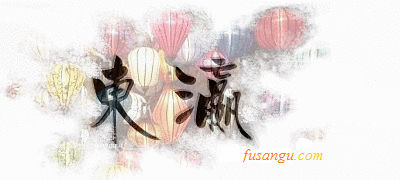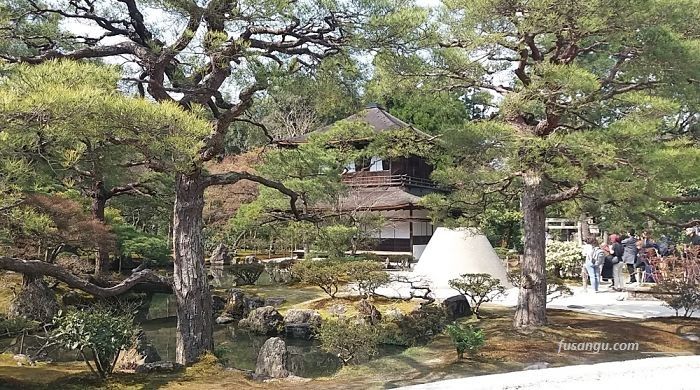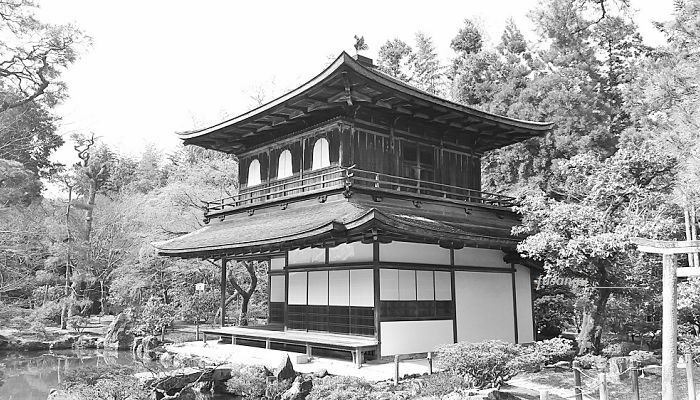
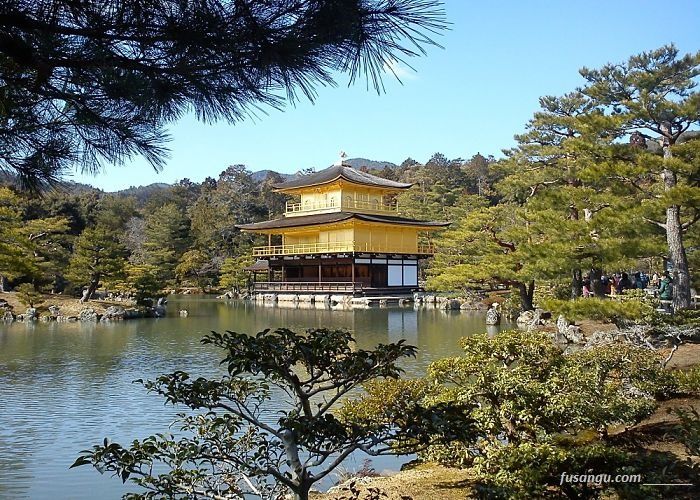
In this page we describe a 10-day journey to Japan. It is a classic itinerary through Tokyo, Kyoto, Nara, ancient capitals of the nation and home to some of the country’s most important cultural treasures and historical landmarks.
The article is intended to help those who have never visited Japan before and want to organise everything on their own.
The comprehensive guide will help you make decisions in the following areas:
-
1) Where to go, what to see, how to allot time(how to plan the visits and excursions)
-
2) How to get around (by train, bus; costs and strategies to save time and money)
-
3) Where to stay (for every destination, best areas, different accommodation solutions)
Contents
-
Where to go in Japan in 10 days (choice of the destinations)
-
Suggested itinerary (direction, duration, time allocation, brief description of the journey)
First journey to Japan: how to choose the travel destinations
If you only have 10 days and wish to travel in Japan without submitting to a strenuous tour de force, we suggest that you focus on the classic route, which leads from Tokyo to Kyoto. From the latter you will move to visit nearby Nara and Osaka.
Why to choose Kyoto, Tokyo, Nara
If you are passionately fond of art and want to discover the traditional culture of Japan, the choice is obvious and you will want to devote your time to exploring Kyoto, Tokyo and Nara.
Of course other destinations would suit this travel theme but it would not be easy to add them to the programme of such a short journey. Moreover, you would most certainly appreciate them better after visiting the cities included in this programme.
If you are more interested in modern culture and lifestyle or you wish to get off the beaten paths, you will still find plenty of satisfaction by sticking to a Tokyo-Kyoto-Osaka route.
Along the description of the journey we will present a fair number of variations, aimed at helping those who have specific needs and wishes such as:
-
1) Containing the costs;
-
2) Exploring the nightlife;
-
3) Travelling without much planning.
Even small modifications can make a difference, especially if you are on a budget or choose to visit Japan in certain periods of the year.
Even if ten days are a short time span, following this itinerary you will certainly gather a huge variety of impressions, images, sensations which will definitely make you want to visit Japan again.
A range of different choices entailing a larger number of destinations will be presented and assessed. Common variations include brief excursions from Tokyo and Kyoto.
It is theoretically possible to even reach Hiroshima but such a choice would make the journey rather hasty and not very enjoyable.
Suggested 10-day Japan itinerary
The following itinerary is intended for those who want to visit Japan for the first time. Being 10 days a very limited time frame, we chose a classic route, a Tokyo-Osaka itinerary with a long stay in Kyoto.
This itinerary is undoubtedly the basis for longer travels, which can easily be arranged by adding longer stays in each city, day trips or further destinations.
Starting point
Most people start and finish their journey in Japan in Tokyo as this city’s airports are the most common gateways to the country.
If you want to spare time and money you may want to spend some time looking for convenient multi-city flight itinerary.
For this itinerary it would be best to enter the country through Tokyo (Narita or Haneda airport) and exit through Kansai Airport (near Osaka).
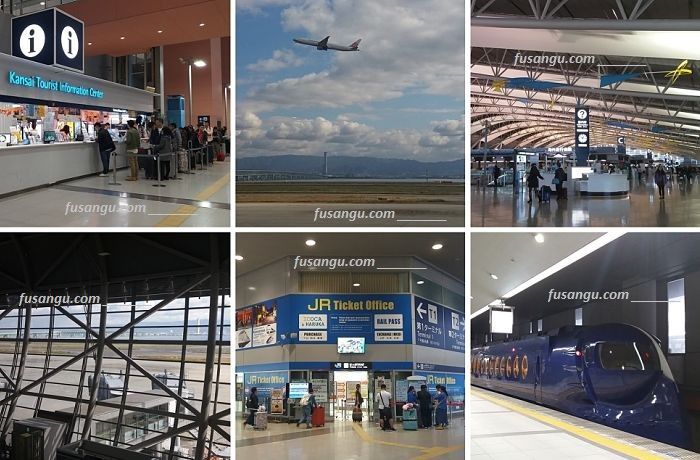
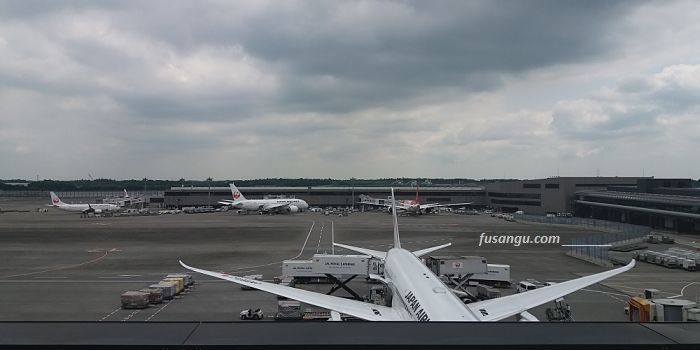
Domestic transfers: suggested solutions
As for the internal transfers, several options for different needs are available. We will consider two solutions:
- High-speed train: the easiest and most comfortable way to travel in Japan. After the 2023 price increase, the 7-day Japan Rail Pass no longer pays off for this itinerary;
- Night bus: the cheapest travel option in Japan, a choice particularly suitable to young, adaptable travellers who are on a budget.
If you don't mind adjusting your itinerary, you might want to consider the option of buying a JR Hokuriku Arch Pass. This choice entails the necessity of organising all transfers between Tokyo and Kyoto via Kanazawa.
Duration
The itinerary takes up 10 full days. Depending on your travel arrangements, the entire journey may last 11-12 days.
How to allocate the available time
We suggest you allot time according to the following schedule:
- Tokyo: 3 days;
- Kyoto: 4 days;
- Nara: 1 day;
- Osaka: 1 day.
Two half-days are absorbed by the transfers between Tokyo and Kyoto.
Where to stay
As for accommodation the easiest option for this journey is to stay only in Tokyo and Kyoto. Nara and Osaka can be visited with day-excursions from Kyoto.
If you are on a tight budget, especially during the cherry blossom season or whenever demand is high and availability is low, you may choose Osaka over Kyoto and visit the latter with day trips.
This is not an ideal solution but we will give suggestions on how to plan that.
If you enjoy slow-travelling and want to avoid the crowds, you may spend a night in Nara.
Brief description of the journey
We assume that you can start visiting Tokyo in the early morning of the first day. This can happen either if you spend the previous night in the city or if your flight arrives early in the morning (which is often the case if you hail from Europe).
Day 1 – Tokyo
Once arrived in Narita airport (it is also possible to fly into Tokyo through Haneda airport) you have to go through the immigration and customs procedures and collect your luggage. The airport is very efficient and you can expect the whole process to be complete after half an hour.
Narita tourist offices are very well organised, the staff is kind and willing to help and you can find there plenty of maps and flyers.
Transfer from Narita to Tokyo
There are many ways to get from Narita Airport to Tokyo. The distance, around 70 km, is usually covered in 70-90 minutes.
Trains and buses offer the best value solutions. Taxis are expensive but comfortable. Good compromise options are offered by shared shuttles and limousine buses.
Most people choose to travel by train. There are several services available, with differences in travel time, cost and destinations.
Operated by JR, N'EX trains offer the most comfortable and fastest way to reach Tokyo Station and Shinjuku from Narita Airport. Keisei railway company offers further transfer solutions, among which is the cheapest one.
The journey between Narita Airport and Tokyo Station lasts around 70 minutes. Less than 90 minutes are needed to reach Shinjuku.
If you are on a budget you may choose to travel on the rapid trains operated on the Sobu line. The ride to Tokyo Station lasts 90 minutes and costs less than 1.500 yen.
Those who choose to base themselves in Ueno or Asakusa might prefer taking the Keisei trains. This company operates local and express trains. The Keisei Skyliner is the fastest railway connection between Narita Airport and Tokyo (Keisei Ueno Station, a few steps away from Ueno Station, in the heart of the district). The journey takes 45 minutes and costs around 2.500 yen. Travelling by local trains takes 70 minutes and costs 1.300 yen.
Where to stay in Tokyo
As mentioned, it is not necessary to stay close to a station served by the Yamanote or other JR lines because it is not convenient to activate the JR Pass until you leave Tokyo.
A more convenient option to get around is to make use of the subway with a 3-day all network tourist pass. This gives you plenty of possibilities when it comes to choosing the area where you base yourself. However, the best places to stay for such a short stay are still the central districts of Chiyoda, Taito and, a little further away, Shinjuku:
The best places to stay if you intend to follow this itinerary are:
- 1) Ueno (or nearby Asakusa), a neighbourhood easily accessible from anywhere, including Narita Airport. There is a wide offer of accommodation, ranging from hostels to western-style hotels. A good amount of cheap and mid-range Japanese traditional inns (ryokan) is located between Ueno and Asakusa;
- 2) Shinjuku, centre of Tokyo’s nightlife. Here are many mid-range hotels, most of which in rather dull high-rise buildings. A few apartments are to be found a little further away;
- 3) Chiyoda, centre of Tokyo; around Tokyo Station (Marunouchi) you can find many of the city’s most prestigious and luxurious hotels. Mid-range hotels are near Kanda Station and good quality hostels are found near Nipponbashi (north-east of the station).
Subway tourist passes
A 3-day Tokyo subway pass offers a good chance of saving money and making use of underground lines very easy. By sweeping your pass at the entrance and exit gates of the stations you will not need to purchase tickets for each ride. This saves a lot of time, especially to those who are not familiar with the labyrinth-like Tokyo metro networks.
First visit
Taking into account that jet-lag might be a burden, for the first day we suggest you follow a rather uncomplicated and light programme.
Good options are the following:
- A visit to a traditional garden such as Rikugi-En or Koishikawa Koraku-En. Both are easily accessible by metro and railway. The surroundings of both have some places of interest: near Rikugi-En is Ikebukuro; near Koishikawa Koraku-En are the Kodokan (the world’s headquarters of judo) and Tokyu Domu, an entertainment complex;
- A stroll along the perimeter of the Imperial Palace and a visit to Yasukuni Shrine, one of Japan’s most important religious sites, most famous abroad for its museum which conveys controversial interpretations of the recent history of Japan;
- A visit to the shopping areas of Shibuya and Shinjuku or the electric town of Akihabara;
- A visit to a museum. If you are fond of history we suggest you spend time at Tokyo National Museum or Edo-Tokyo Museum.
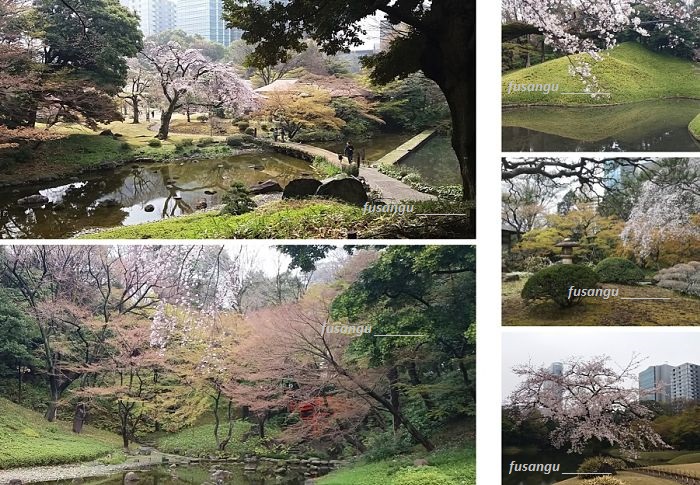
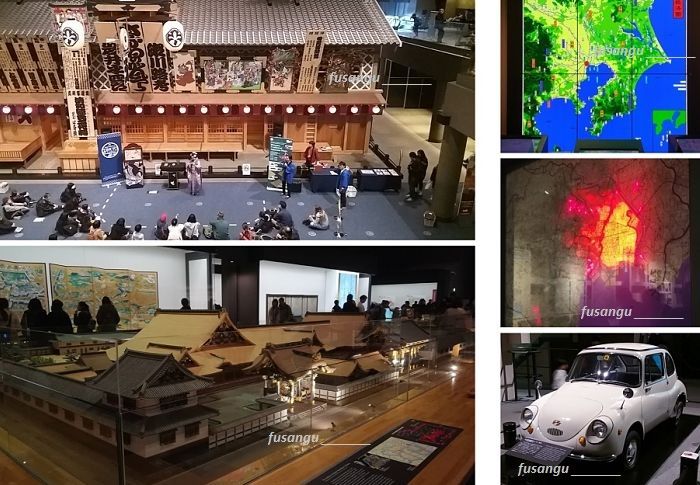
Day 2 – Tokyo
The second day is the first full sightseeing day. Assuming you are in good shape and have slept off the jet-lag effects, you will be ready to spend the whole day getting around and visiting some of, Tokyo’s landmark and historic neighbourhoods.
In order to make things easy, especially if you chose to stay in either Chiyoda or Ueno (or Asakusa), the whole day is spent in a relatively small area. Transfers are very easy, travel time low and you might even just walk anywhere.
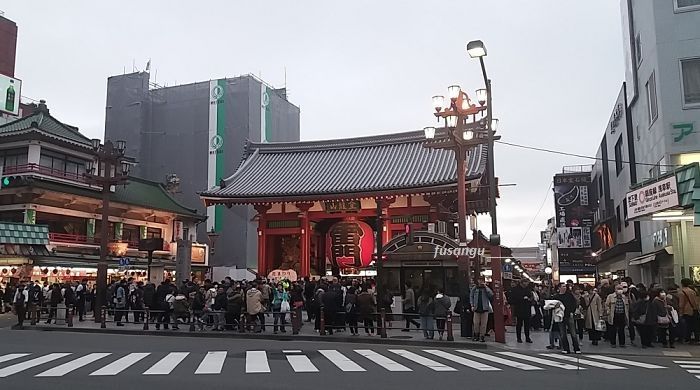
8:00 – 9:30: Asakusa, Senso-Ji
A Buddhist temple with a long history, Senso-Ji is the perfect place to start your sightseeing day. If you come here early you can avoid the crowds but this is not as necessary as in other places because the festive atmosphere surrounding the temple is part of the enjoyment of this visit.
Asakusa is widely regarded as one of Tokyo’s few traditional districts but this should not deceive you. You would be disappointed if you expected to see large clusters of ancient buildings. The area was fire-bombed during the last year of World War II. Nevertheless there is still a certain sense of history and your imagination will supplement the lack of physical testimonies. Access to the Senso-Ji is marked by Kaminari-mon, an impressive gate. Behind it, along Nakamise-dori are many souvenir shops.
9:30 – 9:45: From Asakusa to Ueno
It is very easy to reach Asakusa from Ueno. The easiest way is to take a train on the Ginza line (5 minutes; 170 yen).If you choose to walk, you will reach Ueno in 20-30 minutes.
9:45 – 14:00: Ueno (park and National Museum); lunch break
Ueno Park is just to the west of Ueno Station. This is one of Tokyo’s oldest parks. It incorporates native and western elements and it is one of the most popular green areas of the city, considered a must-see destination during the cherry blossom.
The site is home to several religious buildings. Many are part of ancient Kanei-Ji temple. Of outstanding beauty is Toshogu Shrine, which will give you a glimpse of the magnificence and solemnity of Nikko’s sacred architecture.
We suggest you do not miss out on a visit to the National Museum, a perfect introduction to the Japanese art and history. As time is very limited, you can choose to focus only on the main exhibition hall.
14:00 – 14:30: From Ueno to Shibuya
As you have not activated your JR Pass but you have bought a subway pass instead, you can transfer from Ueno to Shibuya by using the Ginza line. The journey takes nearly half an hour.
14:30 – 18:00: Shibuya (crossing, Omotesando, MeijiShrine)
Shibuya Crossing lies near the district’s main station. It is one of the most recognisable landmarks of modern Tokyo and a popular gathering place for the local youth and foreign visitors who wish to explore Japanese contemporary extravagance and make acquaintances.
After seeing the statue of Hachiko you will most likely get lost in one of the enormous department stores nearby. They mainly cater to a young clientele but you can also find a variety of upscale boutiques. There is plenty of restaurants around. You will need to restraint yourself and set a clear time deadline otherwise you could easily spend the whole day here.
If you leave by 16:00 you can visit Meiji Shrine, a large shinto shrine surrounded by a beautiful park. If you are lucky you will be able to watch the procession of a traditional marriage. Afterwards you can stroll along Omotesando, a large avenue lined with almost all international luxury brand shops.
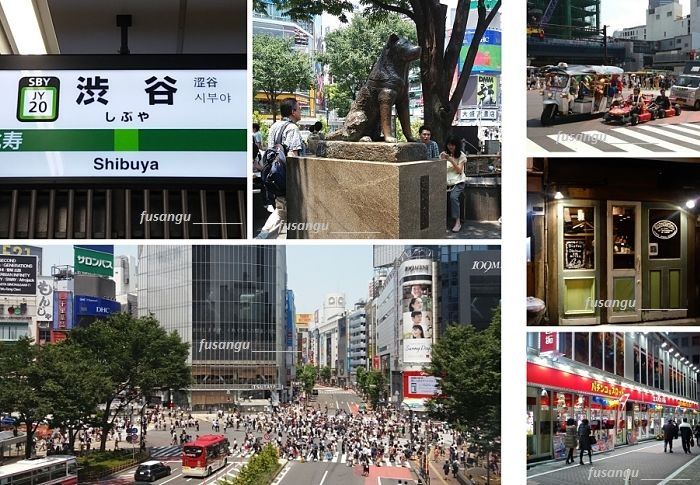
18:00 – 18:30: From Harajuku to Shinjuku
Regarded as Tokyo’s nightlife centre, Shinjuku is a high density maze-like area, a place where it is much fun to get lost amid dark and narrow backstreets, crowded avenues, huge shopping malls, pachinko and video game entertainment complexes and so on. Kabukicho, a seedy area, is a place where you had better be careful.
A lot of cheap eateries can be found around the station and if you are vegetarian, vegan or have any kind of particular needs regarding food, look no further. Cheap and friendly izakaya abound in a Omoide Yokocho.
Variants
It would definitely be interesting to add a visit to Nezu Museum. The programme is already very intense so if you opt for this you should drop other visits. Among other solutions:
- Ueno, Shibuya and Nezu Museum; in this case you leave out Senso-Ji and Asakusa, which can be visited on the next day.
In early spring and mid autumn
If you are so lucky that you can visit Japan in early spring (end of March, beginning of April) or autumn (mid November) make sure you add a visit to Shinjuku-Gyoen, a large park where you can admire cherry blossom and autumn colours.
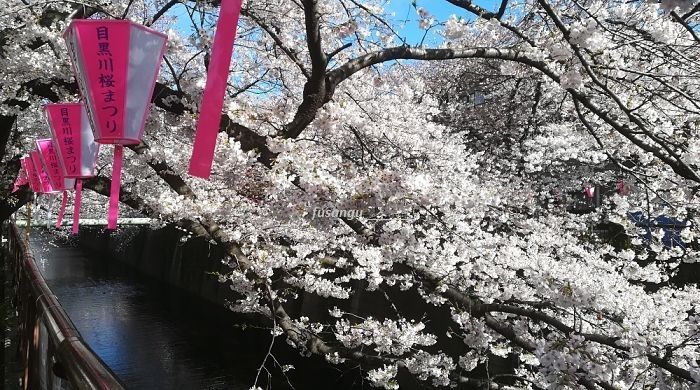
Other hanami sightseeing spots
Hanami (“flower viewing”) is a festive atmosphere that celebrates the spring and its significance as rebirth season. Large crowds gather in parks and gardens to admire the beauty of the delicate blossoms and cultivate relations.
Apart from the already mentioned Shinjuku-Gyoen, these are hanami spots that you can easily add to your Tokyo 3-day itinerary:
-
Meguro-gawa, a narrow canal lined with a multitude of someiyoshino cherry trees. You can get to Meguro-gawa by reaching Nakameguro Station with the line Hibiya;
-
Ueno Park: many trees are found in the park; some of them are late-blooming varieties.
Day 3 – Tokyo | excursion to Nikko
On the third day you can visit Nikko, a small town in the Tochigi Prefecture (north of Tokyo). It is home to some of the nation’s most important shrines and temples. Their style and artistic value are outstanding and highly distinctive.
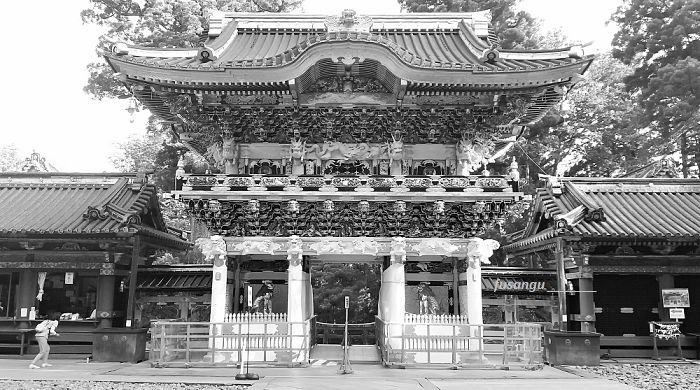
6:40 (or 7:30) – 9:30: From Tokyo (Asakusa Station) to Nikko
Unless you want to take part in a guided tour, which is advisable if you want to make things easier, you can reach Nikko by train from Asakusa Station. The easiest way of travelling is offered by the Tobu-Nikko Line. This is not part of the JR network and you will need to purchase the tickets at least the day before because it is necessary to leave Tokyo early in the morning. The journey takes 2 to 3 hours depending on the service you choose. Travelling on the local trains requires one to three train transfers.
We recommend that you choose the departure time very carefully so as to make the journey fast and uncomplicated. To this end you can check the timetable on hyperdia.com. A very convenient tourist pass (Nikko World Heritage Pass) is available, which provided a return trip connection between Tokyo and Nikko as well as unlimited travel on the buses connecting Nikko Station with the most popular sights of the main temple area. The price amounts to around 2.100 yen.
Tobu-Asakusa Station opens at 7:20; therefore you will need to buy your ticket the day before or you can do it online and redeem it at the station. You can also use the Nikko World Heritage Pass on the fastest trains but you will need to pay a supplement to do so. If you leave at 6:40 you will arrive in Nikko by 9:30.
9:30 – 15:00: Nikko, Sannai
Once you get out of the railway station you can reach the bus station on foot and take a bus bound for Sannai Area. Shinkyo (“Sacred Bridge”) is the ideal and traditional entrance to the area. The slender red bridge which crosses over a quaint river is symbolic of the transition into the sacred grounds. Simple and yet very elegant and refined, surrounded by a beautiful natural environment, the artwork could not inspire more of a sense of deference. It is part of Futarasan Shrine.
After a short walk through the old forest that protects the whole area you are to encounter Rinno-Ji, a large Buddhist temple. Recently renovated, it comprises a number of buildings of exceptional artistic value. The small Shoyo-En garden is well worth a visit as well, especially in the first half of November when the red maples create a small but exquisitely vivid scenery.
Proceeding north along a gently ascending path, you approach Toshogu Shrine. This is Nikko’s most famous shinto shrine. It was found as the resting place of Tokugawa Ieyasu, first shogun of the Edo Period. His grandson expanded it into the great shinto shrine that you can see today. Its incredibly elaborate and colourful decorations, which would appear baroque in the eyes of a European visitor, are unique in Japan.
After leaving Toshogu, follow the path lined with stone lanterns and reach Futarasan Shrine. This shrine was founded by the monk, Shodo Shonin who introduced Buddhism to Nikko. Its name relates to deity linked to the most prominent sacred mountain in the area. Continuing to move westward you are bound to encounter Taiyu-In, resting place of Tokugawa Iemitsu. Albeit less lavish than Toshogu, it is an astonishing work of art. The simple and dignified mausoleum is an exquisite creation.
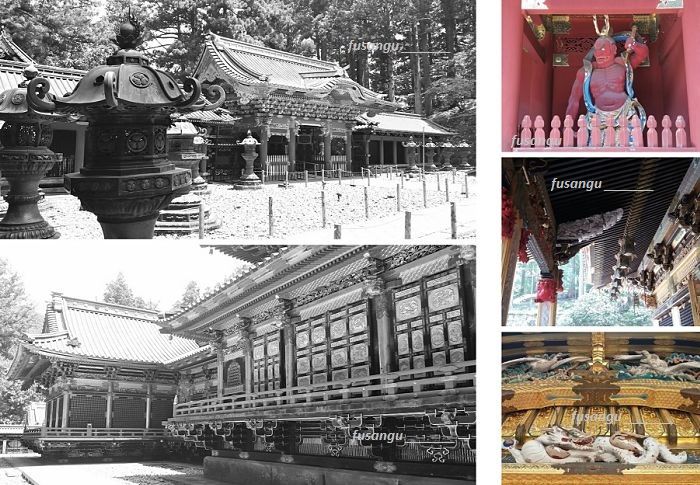
Instead of Nikko you may choose to visit Kamakura, ancient capital famous for its prominent Zen temples.
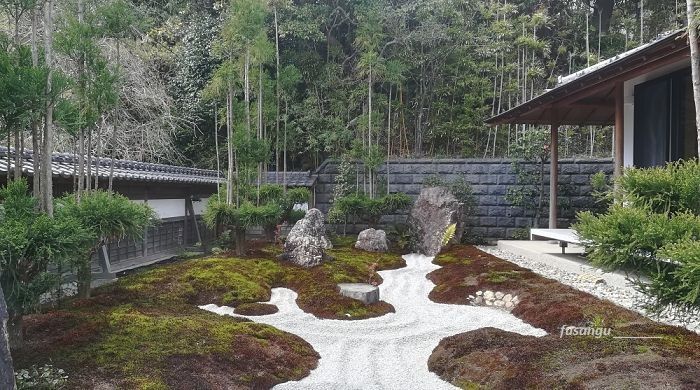
Day 4 – Kyoto
On the fourth day the journey continues in Kyoto, Japan’s ancient capital.
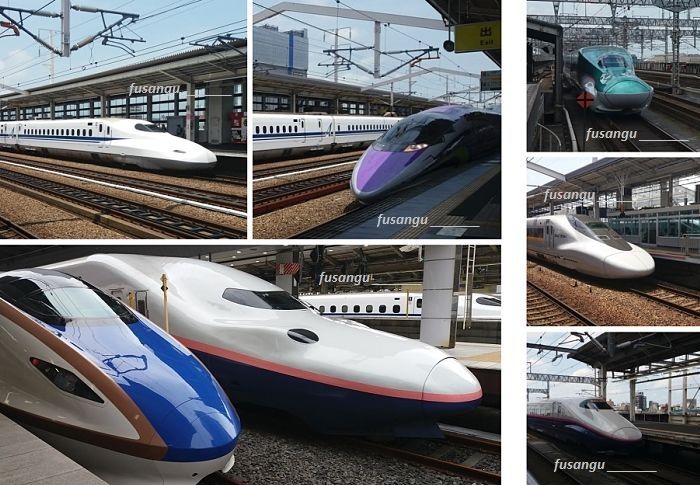
8:00 – 11:00: From Tokyo to Kyoto
Once you have reached Tokyo Station, head to the ticket office specific desk and activate your Japan Rail Pass ticket. The procedure usually takes only few minutes but it is better to arrive at least 40 minutes before departure.
Trains between Tokyo and Kyoto are very frequent, especially in the early morning. Take a shinkansen, the world-renowned Japanese high-speed train. The journey is comfortable and lasts around 3 hours.
If you travel in high-season and you prefer reserving the seats, do so the day before or when you enter Japan.
Stations in Japan are very large and, despite abundance of indications and maps, quite confusing because they are always crowded. Check the code of your train, go through the access gates, reach the departure track and join the queue. If you have made a reservation you will know what carriage you have to enter. Signs on the floor clearly indicate the position where each carriage will come to a stop. Otherwise, check the which carriages are to be used by passengers without a reservation.
Once you have reached Kyoto, head to the Kyo-Nabi tourist office. This large area offers a great deal of maps, flyers and material designed for the most demanding visitors. The kind and professional staff is ready to provide information and help. They can speak many languages. Detailed information and forecasts on the cherry blossom and autumn leaf colours evolution are provided too.
Where to stay in Kyoto
For such a short stay in Kyoto we suggest you pay attention to accessibility and easiness of getting around. At the same time you might not want to renounce to a context where you can enjoy the beauty of the city and have easy access to restaurants and other services.
Three areas corresponding to the said requirements:
- Kyoto Station, the most obvious and pragmatic choice, which makes travelling very easy and cheap. Tourist buses leave from the square in front of the station and a subway line serves the area. The centre is not too far away and some nice hotels and hostels are here, though the context is definitely not the most beautiful;
- Higashiyama (around Gion), the centre of the traditional city; it is well connected to Kyoto Station, very close to the centre. If you find accommodation near Yasaka-Jinja, the position is almost unbeatable and you can visit fascinating traditional districts at dawn, in complete tranquillity. A lot of traditional Japanese inns (ryokan) can be found here. Prices are not necessarily too high but are easily fully booked, even 3-5 months before. If you want to feel the atmosphere of the old city and experience staying at a traditional ryokan, look no further
- Kawaramachi, in the centre, just across the river from Gion. A good compromise, ideal for those who want to base themselves in the centre but have not managed to find a hotel in Gion to their liking.
Tourist transportation passes
Two day-passes offer the most suitable solutions for this journey:
- 600 yen pass covers unlimited travel on the city’s public buses. It pays off if you use the bus at least three times;
- 900 yen pass covers unlimited travel on the city’s public buses and the subway lines. For a visit programme like the one described here, this pass is convenient if you choose to stay in the centre (Kawaramachi or Gion) or if you choose an alternate visit schedule (e.g. during cherry blossom; more on this later).
12:30 – 18:00: First visit (three options)
After having lunch (lots of restaurants are inside the building above the station) and checking-in in your hotel, you can begin your sightseeing in Kyoto.
We suggest an easy tour near the centre. These are the options (your choice might depend on the position of your hotel):
- Nakagyo; the centre of Kyoto is a modern and rather dull area where you will not find much apart from shopping malls, restaurants and boutiques. A few gems can be found. You can visit the Nishiki Market, a nice place to discover a little about the city’s daily life, Ponto-cho, a narrow alley where you can see old restaurants; then cross the river and you reach Gion, the famous geisha district
- Higashi Hongan-Ji and Shosei-En garden, great destinations if you love architecture and art. They are very close to Kyoto Station but mostly ignored by foreign visitors;
- Kyoto Imperial Palace; easy to reach by subway or bus from the station, it is now open to the public without need for a reservation in advance.You can walk around the area and see some buildings, though it is not possible to visit them. The park which surrounds the compound is enormous and comprises many temples, groves and gardens. Favourite choice during the cherry blossom.
Day 5 – Kyoto (Sakyo and Higashiyama)
The fifth day is spent in the eastern part of Kyoto, within the limits of Sakyo and Higashiyama districts. These are among the most beautiful and culturally significant areas of the city, where you can find old temples and shrines set among forested hills and tranquil valleys.
7:45 – 8:30: From Kyoto Station (or Higashiyama) to Ginkaku-Ji
Whether you stay near Kyoto Station or Higashiyama, you can easily reach Ginkaku-Ji temple by bus very easily. Buses are frequent and travel time less than 45 minutes.
We suggest you start your sightseeing early (and even more so if it is high season).
8:30 – 9:30: Ginkaku-Ji
Ginkaku-Ji is one of Kyoto’s cultural and historical treasures. Formerly a residence of a shogun, it was turned into a zen temple. It is considered the cradle of the so-called Culture of Higashiyama, the ambit within which philosophy and many arts flourished and developed to new heights.
9:30 – 11:30: Philosopher’s Path
A five-minute walk from Ginkaku-Ji and you come across the Philosopher’s Path. Turn left and walk southward along the canal.
The pleasant stroll is most atmospheric when the cherry trees form a long tunnel of candid white clouds with smatterings of pink. If you are lucky a gentle wind will blow and petals will fall like snow.
11:30 – 12:30: From Philosopher’s Path to Maruyama Park
Along the way from Ginkaku-Ji to Maruyama Park there are many temples that would well deserve a visit. Eikan-Do, Nanzen-Ji, Shoren-In, Chion-In are all beautiful and of outstanding historical and cultural importance.
On such a short stay you will have time to visit two of them at best. Value quality over quantity in your choices.
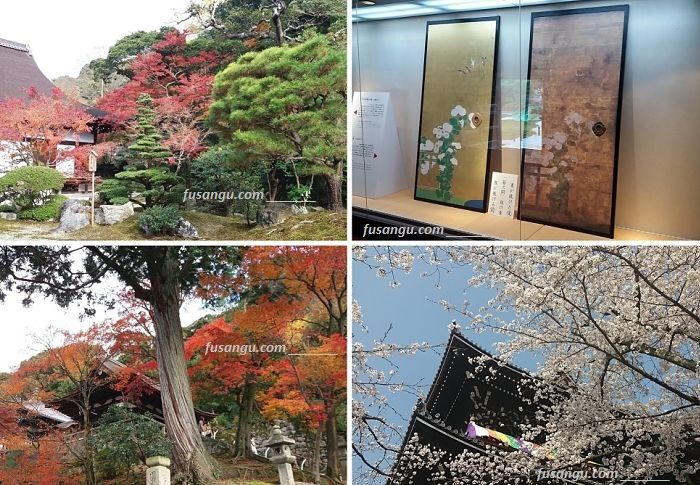
13:30-14:30: Maruyama Park, Yasaka Shrine, Kodai-Ji
Going through the beautiful Maruyama Park you will reach Yasaka-Jinja, one of the most popular shinto shrines of Kyoto. Its surroundings are one of Kyoto’s best preserved traditional neighbourhood.
Postpone the visit to the urban area of Gion, best visited in the evening, and head to Kodai-Ji, one of the most beautiful zen temples in Higashiyama.
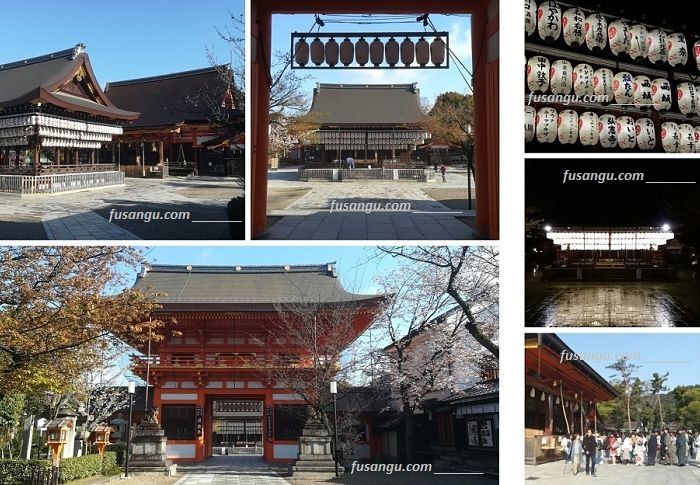
14:30-15:30: Kodai-Ji
Enchanting in the autumn colours (lit in the evening in late November), the temple comprises buildings of worship, a garden, tea houses, a bamboo grove. The composition and its single elements amount to a real masterpiece.
15:30-16:30: Ichinen-zaka, Ninen-zaka, Sannen-zaka, Gonen-zaka
Once you are done with the visit to Kodai-Ji, find the Daidokoro-zaka alley and turn left into Nene-no-michi. This is the beginning of a fascinating itinerary along picturesque alleys (Ichinen-zaka, Ninen-zaka, Sannen-zaka, Gonen-zaka), pleasant sights.
Do not miss out on Yasaka-no-to Pagoda, one of Kyoto's most recognisable landmarks.
16:30-17:30: Kiyomizu-dera
The final destination of today’s intense sightseeing is Kiyomizu-dera, a magnificent Buddhist temple atop a small hill. Its architecture is unique. A terrace connected to the main hall allows beautiful views over cherry and maple trees.
Make sure you visit nearby Jishu Shrine, dedicated to the deity of love, and Otowa Waterfall, whose waters are said to bless visitors with conjugal happiness, success in the studies and longevity. Expecting mothers visit Koyasu Pagoda.
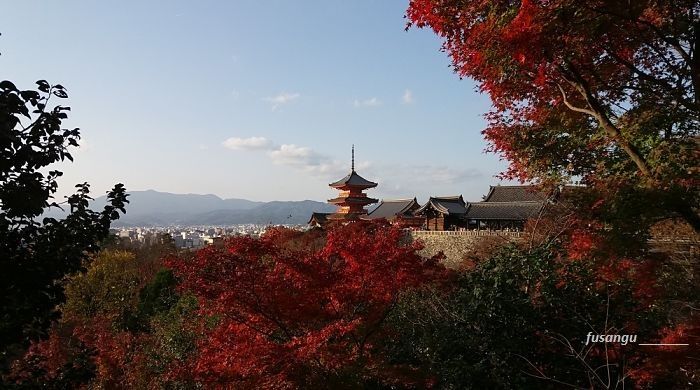
Day 6: Kyoto (Arashiyama and Fushimi Inari Taisha)
Kyoto Station is the staring and ending point of today’s itinerary. If you choose to stay in the centre or Higashiyama, you can simply reach the station by bus or subway.
This is an intense sightseeing programme and depending on your attitude toward travel you may want to reduce the number of sightseeing places.
Arashiyama is an amazing natural and cultural landscape located in the western suburbs of Kyoto. You can reach it by train (JR Sagano line) from Kyoto Station in less than half an hour.
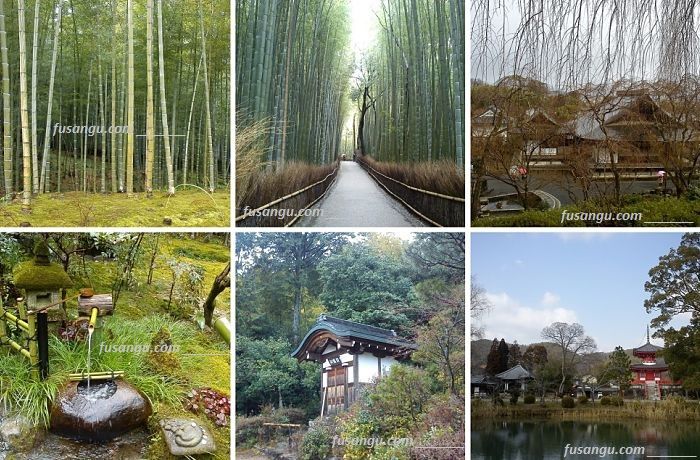
7:30-8:30: Togetsu-Kyo, Hozu River
Once you have reach Saga-Arashiyama Station walk westward through the quaint little town. Eventually you will find the river and the recognisable Togetsu-Kyo, a beautiful bridge crossing over Hozu River. The scenery all around is most beautiful in spring and autumn but there is a subtle charm to it during winter.
8:30-9:15: Tenryu-Ji
Not far from the bridge is Tenryu-Ji, an ancient Buddhist temple of great cultural significance. While most buildings you can see now are reconstructions, the wonderful garden is in its original form. You can see a wide variety of plants, many of them are labelled.
Follow the paths around the garden and allow yourself some time to contemplate the serene beauty of the scenery.
After reaching the Taihoden Hall, walk northward and exit the grounds of the temple.
9:15-10:00: Bamboo Grove
A left turn and you are in the famous bamboo grove, one of the most iconic scenes of Kyoto. At the end of the atmospheric trail is decision time. If you turn left you can reach Kemayama Park (very nice in spring). If you turn right you can visit Okochi Sanso Villa.
As time is limited you may decide to skip both and continue walking northward.
10:00-12:30: Jojakko-Ji, Rakushisha, Gio-Ji
After going past Ogura Pond, a tiny building with a thatched roof appears across a field. Its name is Rakushisha, the “Hut of Fallen Persimmons”. Simple, small, modest, you do not need to know Japanese literature to realise that this was the hermitage of a haiku poet.
After visiting the little gem move westward and reach Jojakko-Ji, a Budddhist temple nestled on the western side of Mount Kokura. Its small buildings are little jewels. The pagoda is classified as Important Cultural Property. The scenery in the autumn tones is enchanting.
Proceeding northward you encounter another little treasure. Gio-Ji is a tiny temple situated amid large trees. The deep shade and vivid colours of the moss garden surrounding the temple create an atmosphere of mystery. Gio-Ji originated at the retreat of the woman who lost the favour of her lover and chose seclusion. She was later joined by her mother and sister.
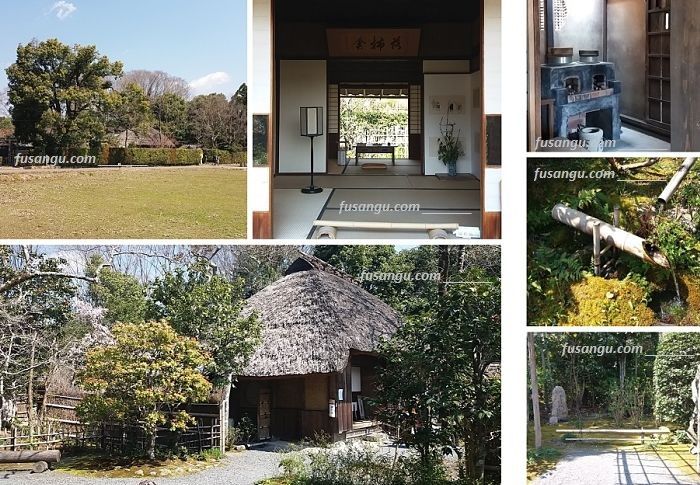
14:30-15:30: From Arashiyama to Fushimi Inari Shrine
After going back to Kyoto Station, you can take a train bound for Nara. Make sure it stops at Inari Station.
15:30-17:30: Fushimi Inari Taisha
A long avenue leads to the entrance of Fushimi Inari Taisha. This is most important shrine in the nation dedicated to the shinto deity of rice.
The gentle ascent along the wide sando inspires a sense of solemnity. At its end the imposing gate. Its majesty is softened by the vibrant vermilion coating.
This colour is employed in almost every building of the site, from the main halls to the more modest auxiliary gates.
After seeing the halls in the lower part of the shrine, the main worship are, go through the impressive sequence of torii which lead deep into the forest. You cannot help but feel the mystic sense of this experience. At the top of the mount are smaller shrines and burial mounds.
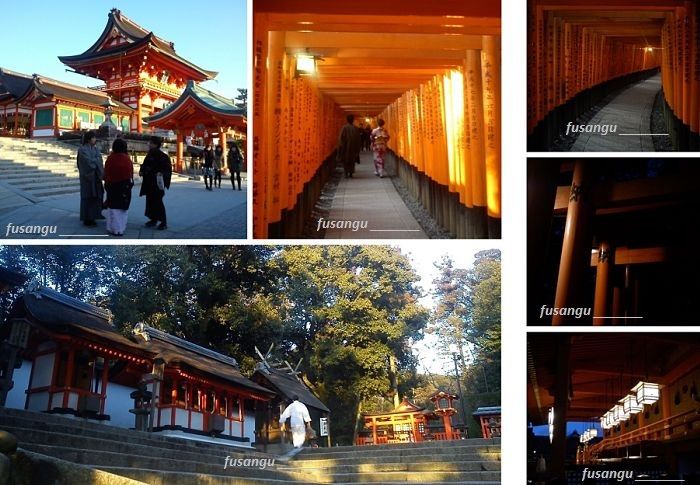
Variant: Daikaku-Ji
If you have time, add Daikaku-Ji to your visit programme in Arashiyama:
-
Daikaku-Ji: formerly and imperial residence, it is a large Buddhist temple with many buildings in different architectural styles. It lies close to a pond which was modelled after Lake DongTing (洞庭湖, China). The lake inspired countless artists in China and other East Asian countries.
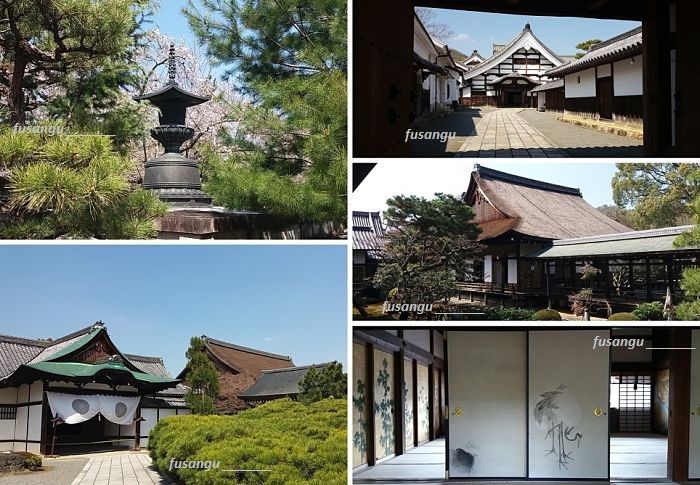
Day 7: Kyoto (Kita, Ukyo and a range of options)
The last day is devoted to Kita, Ukyo. All destinations can be easily reached by bus from Kyoto Station, the centre or Higashiyama.
The programme is not too intense and gives plenty of margin for other activities in the afternoon, such as further visits, partaking in cultural activities or simply a last walk in the centre in search of souvenirs or gifts.
9:00-11:30: Kinkaku-Ji and Ryoan-Ji
Kinkaku-Ji (“Golden Pavilion”, formally Rokuon-Ji), is an iconic Buddhist temple located in Kita, on the north-western periphery of Kyoto.
The elegant shariden, in the form of a three storey building near a pond, is one of the most iconic images of Kyoto and all Japan. It is covered in gold and functions as a storehouse of sacred relics.
The complex was built for the pleasure of the shogun Ashikaga Yoshimitsu. Shortly before his death it was converted into a Buddhist temple.
A short bus ride (but you can only walk) and you reach Ryoan-Ji, a Zen temple in Ukyo.
Ryoan-Ji is most famous for its hiraniwa (garden without hills or ponds). The dry garden features fifteen rocks laid on white gravel. From whatever angle you view the garden, you will not be able to see all of the rocks.
The mysterious nature of this creation does not come as a surprise as Ryoan-Ji is affiliated to the Rinzai Zen Buddhism, a school that emphasises the importance of solving koan (riddles meant to encourage going beyond the limits of rational thinking) as a privileged way to attain enlightenment.
After pondering and meditating, you can visit the grounds of the temple, which comprise a large pond garden. Most likely you will then return to the rock garden for a final contemplation.
You can have lunch at a tofu restaurant inside Ryoan-Ji, next to the pond garden.
11:30 – 13:00: Lunch break; transfer to the next destination
From Ryoan-Ji (or Ninna-Ji) you can take the bus (59) back to Kinkaku-Ji and then continue to your next destination.
13:00 – 17:00: Choice among three options
We suggest you consider the following options to finish your journey in Kyoto:
- Nijo Castle: 15:00-16:30: former residence of the Tokugawa shogun. Surrounded by a moat and low-scale walls, it is a wonderful architecture comprising ancient buildings, gardens and groves. A tour inside the Ninomaru Palace will allow you to see masterpieces of Japanese art such as painted screens and fusuma. You can reach it from Kinkaku-Ji by bus number 101;
- Kamigyo, in the north-western part of Kyoto, a tranquil neighbourhood full of temples and shrines. Here you can visit Kitano-Tenmangu shrine and Kamishichiken, a traditional district, the Kyoto Imperial Palace and Shusui-Tei tea house.
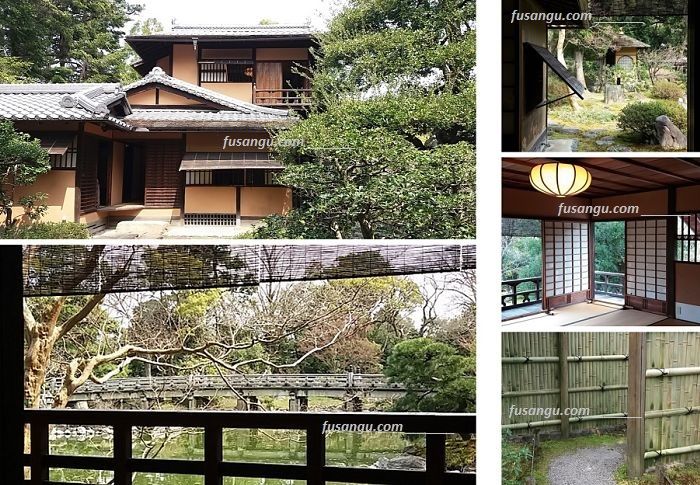
Day 8 – Excursion to Nara (historical and religious sites of Nara Park)
An entire day is devoted to a tour of Nara. Though the ambit of the itinerary is quite small, you will realise that time is very limited and some renounces are necessary.
Nara was an ancient capital of Japan. The city rose to prominence in an era of great cultural development. In this period Buddhism began to flourish and gain popularity and the country imported knowledge, customs, inventions from China.
In general it is advisable to spend one night in Nara but with such a short time frame it is alright to visit the city with an excursion from Kyoto or Osaka.
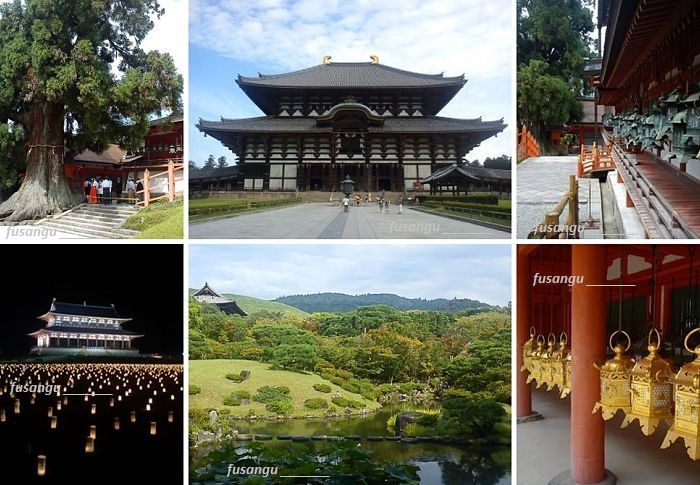
7:00 – 8:00: From Kyoto to Nara
The journey from Kyoto Station to Nara Station takes around 1 hour.
At Nara Station you find a great tourist office providing maps, material and competent advice.
8:00 – 8:30: From Nara Station to Sarusawa-Ike
In less than 20 minutes a relaxing walk takes you from Nara Station to Sarusawa-Ike, the perfect place to start your tour in Nara. From the southern shore you have a picturesque view encompassing the five-storey pagoda of Kofuku-Ji, the first destination.
Nara-machi tourist office
If you plan to visit Nara-machi old town make sure you stop by Nara-machi tourist office. They provide a map complete with suggested itineraries. You will need their advice, especially if you choose to visit Nara with a one-day excursion.
8:30 – 9:15: Kofuku-Ji
Founded by the Fujiwara family at the time when Nara became Japan’s capital Kofuku-Ji had a fundamental role in the diffusion of Buddhism in the country.
Few structures survive today but their appearance gives an insight into the scale and importance of the site.. Among them are four buildings whose historical and artistic value is so exceptional that they are classified as National Treasure.
The large impressive central Main Hall is a recent reconstruction (late 2018). The five-storey pagoda is the second tallest pagoda in Japan. Its gentle shape stands out when you view Sarusawa Pond from its southern shore.
A significant part of the collection of relics of the temple is on display in Kofukuji National Treasure Museum. If you are fond of sacred art, do not miss out on a visit.
9:15 – 12:00: Stroll through Nara Park, Yoshiki-En and Isui-En
Leaving the grounds of Kofuku-Ji and moving eastward you are bound to encounter Nara National Museum. Though the importance of its collection is remarkable, you might choose to skip the visit if you fear you have little.
Countless deer will appear in the park. They are regarded as sacred messengers of shinto deities and they are free to roam around.
In spring pay a quick visit Himuro-jinja, a shrine with many early-blooming cherry trees.
Yoshiki-En is a beautiful garden. It consists of three main areas with different characteristics. Entrance is free.
Nearby is Isui-En, undoubtedly Nara’s most beautiful landscape gardem, a little gem where you could easily spend hours contemplating the carefully designed scenery. Every single element has a role in the composition and it differently contributes in the four seasons.
The garden was built as a villa. A large strolling garden challenges your spirit of observation with a fascinating sequence of views of exceptional beauty.
The most beautiful view can be had from the tea house. By use of shakkei technique, the gate of Todai-Ji and the ridge of Wakakusayama are included in the scene.
12:30 – 14:15: Todai-Ji
If you have visited China before you will definitely recall images of your journey once you see Todai-Ji.
The solemn path leading to it goes through the old Nandaimon gate (the one whose roof appears behind the scenery at Isui-En garden). The wooden gate is guarded by the fierce-looking protective Nio figures.
The Daibutsuden, the main hall of the temple, is one of the largest wooden structures in the world. Inside is the impressive statue of Buddha (Daibutsu). The spacious grounds comprise many buildings, gardens and an elegant fine storehouse, the Shoso-In.
14:15 – 15:00: Mount Wakakusa
Nigatsu-Do, a temple overlooking Nara on the slopes of Mount Wakakusa, is part of Todai-Ji. The area around it is particularly scenic and deserves a lengthy stroll. You can visit it as you move from Todai-Ji to Kasuga Taisha.
15:00 – 16:00: Kasuga Taisha
One of Japan’s most sacred religious sites, Kasuga Taisha is an ancient shrine nestled amid an atmospheric old sacred forest. The site comprises numerous auxiliary shrines devoted to numerous deities.
The iconic lanterns, in many shapes and colours, in stone and bronze, are lined both inside and outside the shrine. They are lit during Mantoro matsuri (in February and August).
Buildings in the distinct bright vermilion colour are the most notable and finest examples of Kasuga-zukuri architectural style. Inside the grounds stand large cypress trees,some of them marked with a shimenawa.
16:00 – 16:45: Walk toward Nara-machi
On the way back you can pass visit Sagi-Ike pond and Ukimi-Do pavilion. You will then reach Nara-machi.
16:45 – 17:30: Nara-machi
Nara-machi is a preserved neighbourhood where you can see a number of traditional houses, shops, tea houses and shrines. Some of the houses are open to the public and there also a few interesting museums.
If you want to visit these places without being in a hurry you should spend a night in Nara.
Variants
If you wish to visit Fushimi Inari Taisha at dusk, you can easily add a stop along the journey from Nara to Kyoto.
Day 9 – Osaka (Umeda, Osaka Castle, Tennoji, Kaiyukan, Namba)
A day can be spent in Osaka in many different ways. Here we describe a programme that strikes a balance between traditional sightseeing and exploring the ordinary city.
Osaka looks like a very modern city. Most of its area was annihilated during the last war. The city had a great role in the cultural exchanges between Japan and East Asia.
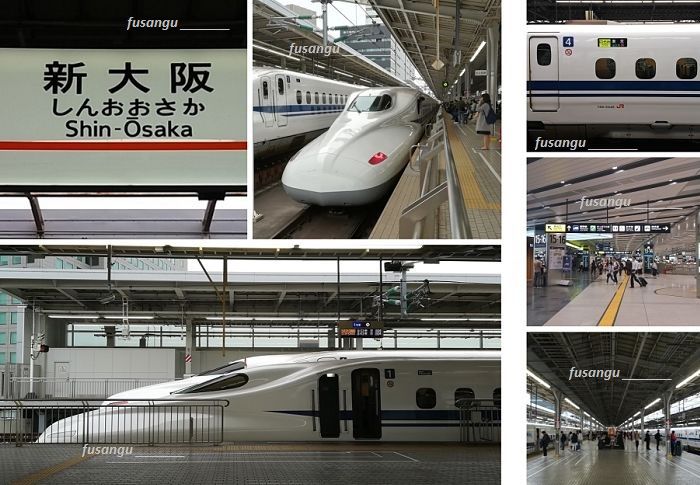
8:00 – 9:30: From Kyoto to Osaka
As you have JR Pass,you can reach Shin-Osaka Station from Kyoto Station by shinkansen in less than 20 minutes.
Osaka can be visited on a day-tour from Kyoto or you can choose to find accommodation in the city if you wish to explore its renowned nightlife.
If you are interested in this aspect or if you find it difficult to book a hotel in Kyoto within your budget limits (which can happen in high season) you may choose the opposite solution, which is visiting Kyoto with day excursions from Osaka. We give suggestions on how to do this later but keep in mind that this can only be regarded as an emergency solution, to be avoid if possible.
Shin-Osaka Station is linked to Osaka Station (in the northern centre of the city, Umeda) and the rest of the centre by the urban railway (JR) and subway. The journey takes 10-30 minutes depending on your destination. The subway provides the best solution.
If you plan to visit Kaiyukan, as we suggest, you can buy a tourist ticket which covers entrance to this aquarium as well as unlimited subway rides for 1 day.
Where to stay in Osaka
If you choose to stay in Osaka, we recommend that you choose an accessible area. The best neighbourhood is Namba, in the southern centre of the city, close to the nightlife scene, well served by public transport and with a huge range of hostels and hotels.
If you travel on a high budget you can also consider the area close to Osaka Castle or Umeda.
10:00 – 12:00: Umeda
Umeda is a neighbourhood in Kita, the northern centre of modern Osaka. All around Osaka Station is a sprawl of high-rise buildings, steel and glass towers, shopping malls and department stores (Yodobashi Camera, Daimaru, Isetan, just to mention a few). These are among the best in the country and there is a certain value in this modern architecture.
Amid all this amount of concrete, steel and glass and their coldness, lies an ancient modest and graceful shrine. The stories linked to it are hearth-warming. It is Tsuyu-no-Ten-Jinja.
If you like walking reach Tenjinbashi, Japan’s longest shopping arcade.
12:30 – 14:00: Osaka Castle
There is not much time so you might even choose to renounce to visiting the inside of the castle and just wander around the park. The huge megalithic walls are impressive. A stone is so large and heavy that experts are puzzled and cannot explain how it was taken to the site.
The military architecture looks fine but it is a post-war reconstruction, which did not follow the original structural design. A better job has been done in Nagoya.
The park is amazing, especially in autumn and spring. Nishinomaru garden lies in the area.
At the south-western corner is Osaka Museum of History.
14:15 – 16:00: Tennoji
A short ride by subway from Tanimachi-4-chome Station and you can reach Tennoji Station. Nearby you can find the Museum of Fine Arts and beautiful Keitaku-En garden. Above the station is the huge Abeno Harukas skyscraper. The view from the top across the bay is fantastic.
A historical temple, Shitenno-Ji, is a few hundreds of metres away. It does not look as impressive as other temples you have visited by now but its historical significance is notable.
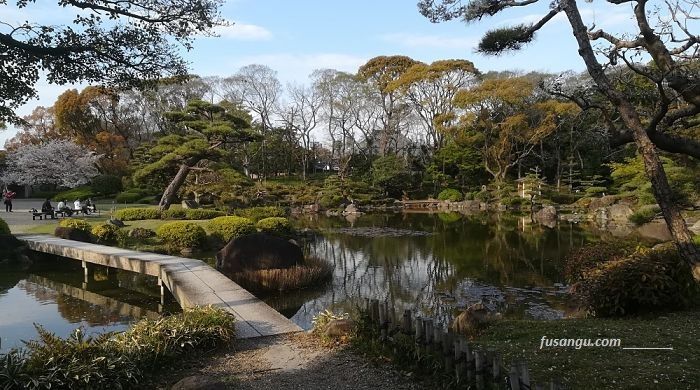
16:00 – 16:30: From Tennoji to Kaiyukan
By Tanimachi and Chuo lines it takes around half an hour to reach Kaiyukan Aquarium (Osakako Station).
16:30 – 19:00: Kaiyukan
Kaiyukan is a large aquarium displaying a large variety of marine wildlife. The visit route proceeds from the top to the bottom of the building. As you move downward you periodically see the huge central tank where the biggest inhabitants live. Among them whale sharks.
The aquarium features a detailed description of ecosystems lying along the Ring of Fire.
Oniric music accompanies the visit with a relaxing effect perfectly matching your humbling enjoyment of the might of mother Nature.
Entrance to Kaiyukan is quite expensive and this can be a problem if you are a large party. A cheaper option is to visit Sakuya Konohanakan, a small but interesting botanical conservatory.
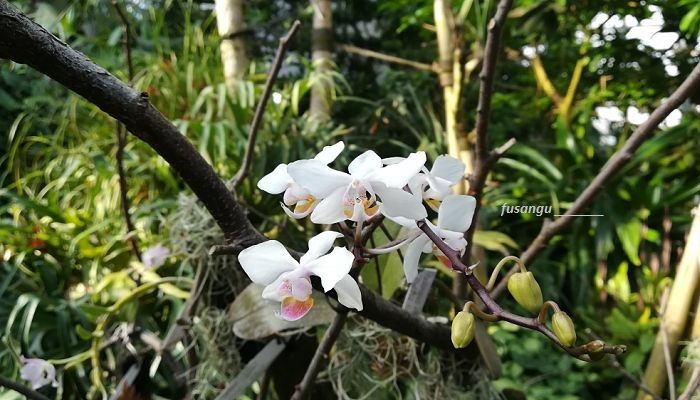
In the evening
After you are done with the sightseeing, head to Dotombori (near Namba) and plunge into the chaos, colours, sounds and allurements of Osaka’s nightlife scene.
Day 10 – Osaka; Tokyo | end of the journey
Half day is absorbed from the high-speed transfer from Osaka to Tokyo (which you can avoid if you find a suitable multi-city flight itinerary).
The half day available can be employed in many different ways. You can add a visit in Osaka or spend some time in Tokyo to buy gifts or souvenirs.
Many intercontinental and international outbound flights leave Tokyo in the evening.
8:00 – 12:00: From Kyoto (or Osaka) to Tokyo
The transfer from Kyoto (or Osaka) to Tokyo by shinkansen takes around 3 hours. Once you are in Tokyo, leave your luggage at the station and reach the destination of your choice
13:00 – 18:00: Visit of a neighbourhood
All the places we mention below are within easy reach of Tokyo Station. You can use Chuo or Yamanote line to get around.
Places where to make purchases
A huge variety of things can be found near Ikebukuro Station. Besides large shopping malls (such as the underground Tobu, just beneath the station), around the station are many shops and large department stores. If you want to buy electronic devices this is the best place.
Clothing can be found at Shibuya. Anime, manga, video games, modellism items and so on are near Akihabara Station.
18:00 – 19:30: From Tokyo Station to Narita Airport
Since this is the last day of validity of your JR Pass, you can reach Narita Airport on board of the fast N'EX trains in 60-90 minutes depending on the station of departure.
Variants
If you choose to end your journey with an image of traditional Japan, stay in Osaka the night before and visit Sumiyoshi Taisha, a large shinto shrine in the southern periphery of Osaka. You can reach it by train from Osaka Station. Sumiyoshi Station lies within walking distance of the shrine.
If you manage to find a suitable multi-city flight itinerary with an outbound flight through Osaka you may add a short visit to Kishiwada, a small town along the way to Kansai Airport.
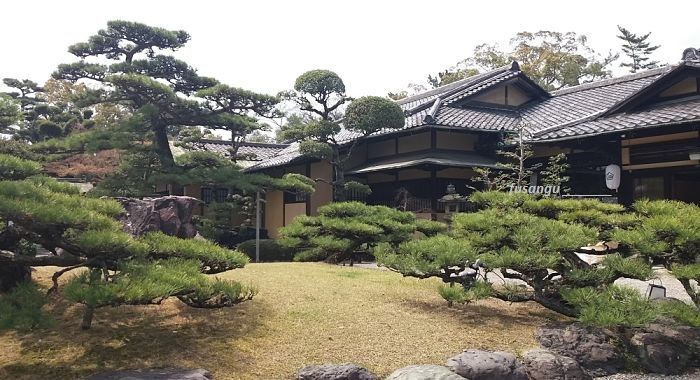
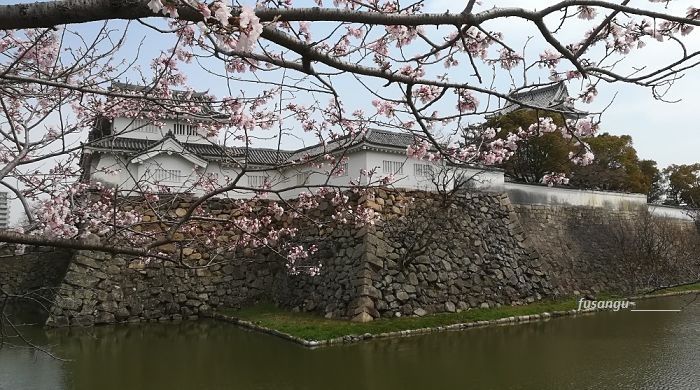
Related articles:
Kyoto 3-day itinerary (Sakyo, Higashiyama, Kita, Ukyo, Nakagyo, Fushimi)
Tokyo 3-day itinerary (Taito, Sumida, Chiyoda, Bunkyo, Shibuya, Shinjuku)
Osaka 2-day itinerary (Kita, Chuo, Minami)
Possible additions:
Between Tokyo and Kyoto: Kanazawa 1,5-day itinerary
Beyond Osaka: Hiroshima 1,5-day itinerary
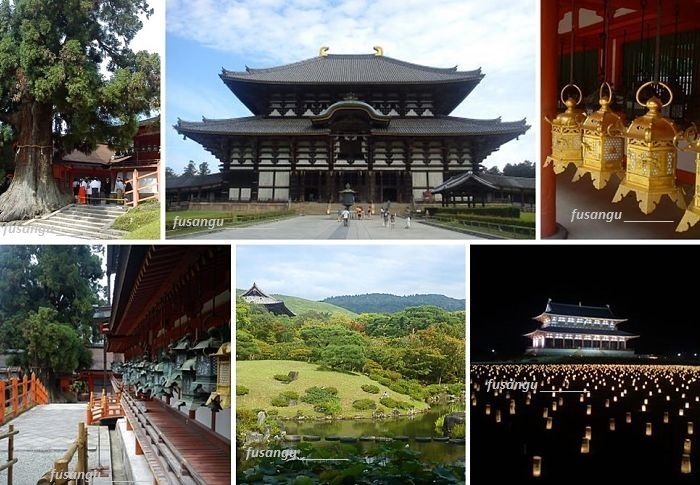
A one-day visit to Nara, especially if arranged as a day trip from Osaka or Kyoto, has to be organised very carefully because time is very limited and there are many places to visit and things to see and do.
The most reasonable choice is to limit the visit within the Park of Nara area. This is a wonderful natural scenery home to a number of gardens, ancient shrines and temples.
One day is very little time to visit Nara. You will definitely enjoy visiting Nara in one day and with a careful organisation you will see many beautiful places of historical and artistic importance but you should at least be aware of the fact that such a short visit will not give you a clear picture of what this city represented in Japan.
In this page we provide information and suggestions on how to organise a one-day visit to Nara. The article is the result of two visits in different periods of the year. In our choices we have a clear idea of what places are to be visited in a one-day your and what should be reserved to a longer stay.
Nara in one day: places to visit, what to see
Nara is home to many important temples and shrines which provide insight into its glorious past, when the city was a capital modelled upon the magnificent Tang China’s capital, Chang’An.
A one-day tour is often limited to the Nara Park area. This is a wonderful setting where deer (Nihonshika) freely wander among ponds, old buildings, shrines, temples. Many of these are vestiges of outstanding beauty.
What you will not be able to see, unless you plan a 2-day visit, are the old temples and archaeological sites in the Nishinokyo area. These are large scale sites where you will get images of the old capital, its relation to China, its importance in the birth of Japanese Buddhism.
Needless to say, you will enjoy visiting Nara in 2 days more if you have already been to China.
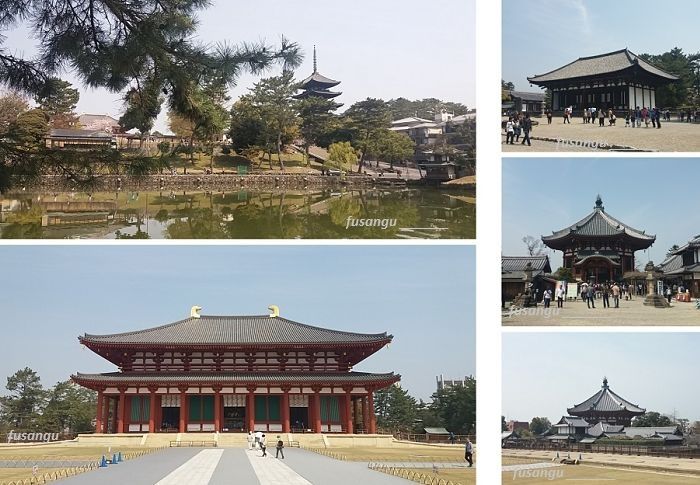
Visiting Nara in 1 day: suggested itinerary
Having only one day available, it is reasonable to limit the scope of the visit to the area of Nara Park.
Itinerary: Kofuku-Ji, Isui-En, Todai-Ji, Kasuga Taisha
The following is the classic one-day Nara itinerary. If you visit the city for the first time, this is the ideal programme. Additions are possible, because the area is very small, getting around by bus or on foot is easy and pleasant.
We suggest you keep a slow pace though. Nara is a place where less is more, where you want to allow yourself time to feel the atmosphere of the past, complement what you see with what you feel and can imagine.
A pseudo-circular itinerary starts from Nara Station and goes through Kofuku-Ji temple, Isui-En garden, Todai-Ji temple and its surrounding and Kasuga Shrine.
|
Itinerary |
8:30 – 9:30
Kofuku-Ji
Kofuku-Ji is an ancient temple situated at the eastern side of Nara Park. It was founded by the Fujiwara family when Nara became Japan’s capital and it has since had a fundamental role in the diffusion of Buddhism in the country.
At the height of the city’s development it comprised over 100 buildings. Today few structure survive. Among them are four buildings whose historical and artistic value is so exceptional that they are classified as National Treasure.
The large central Main Hall is a recent reconstruction. It gives images of the scale and majesty of this fundamental religious site.
The five-storey pagoda is the second tallest pagoda in Japan. Its gentle shape stands out when you view Sarusawa Pond from its southern shore.
A significant part of the collection of relics of the temple is on display in Kofukuji National Treasure Museum. If you are fond of sacred art, do not miss out on a visit.
A non-shallow visit requires no less than 2 hours.
Address: Noborioji-cho 48
Opening hours: 9:00-17:00, every day
Entrance: Central Main Hall, 500 yen; Eastern Main Hall, 300 yen; Treasure Hall, 700 yen
9:30 – 10:00
Nara Park
Walk through Nara Park
10:00 – 11:00
Isui-En
Regarded as Nara’s most beautiful garden, Isui-En is a little gem secluded from the outside world, one of those places where you will like to experience a different perception of time.
The garden lies between Todai-Ji and Kofuku-Ji. Built for an affluent merchant as a villa, it comprises living quarters and a tea house. A large strolling garden challenges your spirit of observation with a fascinating sequence of views of exceptional beauty.
The most beautiful view can be had from the tea house. By use of shakkei technique, the gate of Todai-Ji and the ridge of Wakakusayama are included in the scene.
In the harmonious composition every element is meant to differently contribute in the four seasons. This attention, amounting to cherishing of Nature, is a firm tenet of traditional Japanese art.
A small collection of pottery is found at Neiraku Museum.
A visit should last around an hour.
You can then proceed to visit the adjacent Yoshiki-En, another beautiful garden (the entrance is free of charge).
Address: Suimon-cho 74
Opening hours: 9:30-16:00, except Tuesdays
Entrance: 650 yen
11:00 – 12:00
Todai-Ji
If you have visited China before you will definitely recall images of your journey once you see Todai-Ji.
The imposing temple is testimony to the extent to which Tang China influenced the Japanese culture.
The solemn path leading to it goes through the old Nandaimon gate (the one whose roof appears behind the scenery at Isui-En garden).
The wooden gate is guarded by the fierce-looking protective Nio figures.
The Daibutsuden, the main hall of the temple, is one of the largest wooden structures in the world. Originally it was bigger than the current one, a reconstruction.
Inside is the impressive statue of Buddha (Daibutsu). Cast in bronze, it weighs more than 400 tons and it was gilded. The whole nation contributed to this exceptional work of art.
The spacious grounds comprise many buildings, gardens and a storehouse, the Shoso-In.
Nigatsu-Do, a temple overlooking Nara on the slopes of Mount Wakakusa, is part of Todai-Ji. The area around it is particularly scenic and deserves a lengthy stroll.
Address: Nara, Zoshi-cho 1
Opening hours: 8:00-16:30
Entrance: 500 yen
12:00 – 15:00
Nigatsu-Do and Wakakusayama
As anticipated, the surroundings of Todai-Ji are well worth a visit. As you walk toward Kasuga Taisha make sure to pass through Nigatsu-Do
There are a few places where you can have a quick lunch.
15:00 – 16:00
Kasuga Taisha
One of Japan’s most sacred religious sites, Kasuga Taisha is an ancient shrine nestled amid an atmospheric old forest.
The site comprises numerous auxiliary shrines devoted to numerous deities.
The iconic lanterns, in many shapes and colours, in stone and bronze, are lined both inside and outside the shrine. They mark the sando, the entrance path, which is a journey of the spirit in itself.
Buildings in the distinct bright vermilion colour are the most notable and finest examples of Kasuga-zukuri architectural style. They incorporate elements of China’s sacred architecture, such as the gently sloping roofs. Deer and wisteria (appearing in the crest of the Fujiwara family) are recurrent in the ornamental motifs.
Inside the grounds stand large cypress trees,some of them marked with a shimenawa.
There is a clear relation of harmony between the shrine and the surrounding environment and you might spend hours looking for the best views.
Over 200 species of plants are in the beautiful Shinen Manyo Botanical Garden.
Do not forget to visit the sacred Kasugayama Primeval Forest, and Wakamiya shrine
Best time to visit Kasuga Taisha is autumn. Wisteria blossom, in early May, is another amazing sight. In mid-August during Mandoro matsuri lanterns are lit.
Address: Nara, Kasugano-cho 160
Opening hours: shrine, 6:00-17:30; Botanic Garden, 9:00-16:30
Entrance: shrine, 500 yen; Botanic Garden, 500 yen
16:00 – 17:00
Nara Park, Umiki-Do
Walk toward Nara Station or Nara-machi
One day and a half: how to change the itinerary
Choosing to stay in Nara instead of visiting it on a day trip from Kyoto and Osaka makes the experience much more enjoyable.
If you do so, you can enjoy the city outside of the tourist bubble and visit places in complete tranquillity. Furthermore, you can also add one or two destinations, such as:
-
Horyu-Ji, one of the most ancient temples of the nation, it is linked to the early history of the introduction of Buddhism in Japan. Its spacious grounds house some of the olderst wooden buildings in the world. Some of the invaluable works of art are on display in the museum;
-
Heijo Palace archaeological site, a large area with many vestiges of the ancient capital. Few structures have been reconstructed;
-
Yakushi-Ji and Toshodai-Ji, among Nara’s most important and culturally significant temples. They play an important role in the history of Japan. Toshodai-Ji is the burial site of Ganjin, a Chinese monk who contributed to the diffusion of Buddhism in Japan.
If you want to visit all these sites you need at least two days.
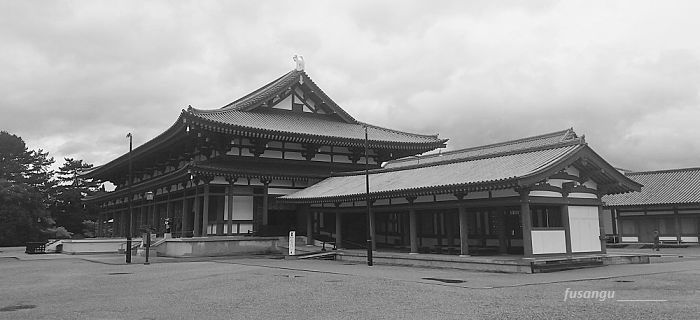
This itinerary is ideally part of a 10-day journey. Details in the following page:

A two-day itinerary only allows to visit a very limited number of sightseeing spots in Kyoto. The city boasts an exceptional quantity and variety of sites of cultural, artistic and historical value. If you visit Japan for the first time, even if just for a week, we suggest you devote to Kyoto at least 3 days.
In order to organise an efficient and satisfactory visit to the city, it is of utmost importance that you choose the destinations taking into account travel time and distances.
A very reasonable choice for a two-day stay in Kyoto is to allocate one full day for visiting Higashiyama district and one day for visiting Arashiyama area, Fushimi Inari Taisha sanctuary and Kinkaku-Ji temple.
This itinerary focuses on Kyoto's cultural heritage. It poses no challenges as to getting around and reaching destinations.
Classic sightseeing itinerary
Itinerary: Higashiyama, Kinkaku-Ji, Fushimi Inari Taisha, Arashiyama
The following can be considered a classic itinerary. It covers Kyoto's main sights focusing on the city's cultural heritage.
In order to make the most of the scarce 48 hours in Kyoto, we suggest that you start your visits not later than 7:00 am. After 6.00 pm you will have plenty of time to wander through the city centre and the surrounding neighbourhoods.
Day 1
Itinerary |
9:00 – 9:45
Ginkaku-Ji
Visit to Ginkaku-Ji temple (Silver Pavilion)
Address: Kyoto, Sakyo-ku, Ginkakuji-cho 2
Opening hours: 9:00-16:30, no closing days
Admission: 500 yen
9:45 – 12:00
Philosopher's Path
Short walk along the Philosopher's Path
Lunch break
12:00 – 13:00
Nanzen-Ji
Visit to Nanzen-Ji temple
Address: Kyoto, Sakyo-ku, Nanzen-Ji Fukuchi-cho 86
Opening hours: 9:00-16:30
Closing days: December 28 to 31
Admission: 500 yen
13:00 – 13:30
Keage Incline
13:30 – 14:30
Maruyama Park and Yasaka Shrine
Visit to Maruyama Park and Yasaka Shrine
Address: Kyoto, Higashiyama-ku, Gion-cho Kitagawa 625
Opening times: always
Admission: free
14:30 – 15:30
Kodai-Ji
Visit to Kodai-Ji temple
Address: Kyoto, Higashiyama-ku, Shimogawara-cho 526
Opening hours: 9:00-17:00, no closing days
Admission: 600 yen
15:30 – 16:00
Ninenzaka, Sannenzaka
Walk to Kiyomizu-dera
16:00 – 17:30
Kiyomizu-dera
Visit to Kiyomizu-dera temple
Address: Kyoto, Higashiyama-ku, Kiyomizu 1-chome 294
Opening hours: 6:00-18:00, no closing days
Admission: 500 yen
How to get around
This itinerary entails long but beautiful walks. Tourist buses offer a comfortable and inexpensive alternative.
The leg between Nanzen-Ji temple and Maruyama Park is relatively long as it would require a 35-45 minute walk.
From Kyoto Station you can reach Ginkaku-Ji temple by bus cost: 230 yen, travel time: approximately 45 minutes). From Kiyomizu-dera temple you can reach on foot Gion and Pontocho in less than half an hour.
During peak seasons traffic jams are frequent.
Variants
-
You can include visits to other temples such as Heian Shrine, Eikan-do, Chion-In and Shoren-In temple.
Day 2
Itinerary |
9:00 – 10:00
Kinkaku-Ji
Visit to Kinkaku-Ji temple (Golden Pavilion)
Address: Kyoto, Kita-ku, Kinkakuji-cho 1
Opening hours: 9:00-17:00, no closing days
Admission: 500 yen
10:00 – 11:00
Transfer by train or taxi
11:00 – 15:30
Arashiyama
Visit to Arashiyama area (western Kyoto, Ukyo District)
-
Togetsu-Kyo bridge
-
Iwatayama Park
Lunch break
-
Tenryu-Ji temple (admission: 600 yen)
-
Arashiyama bamboo grove
You may also want to visit a few small temples in the western area such as:
-
Jojakko-Ji (admission: 500 yen)
-
Nison-In (admission: 500 yen)
-
Gio-Ji (admission: 300 yen)
-
Daikaku-Ji (admission: 500 yen)
15:30 – 16:15
Transfer by train
16:15 – 18:00
Fushimi Inari Taisha
Visit to Fushimi Inari Taisha shrine
Address: Kyoto, Fushimi-ku, Fukakusa Yabunouchi-cho 68
Opening times: always
Admission: free
How to get around
This itinerary requires relatively long transfers. You can get around by bus and train. Taxis offer a more comfortable option.
Related articles:
Kyoto 2,5 day itinerary (suggested itineraries; morning and evening arrival)
Kyoto 3-day itinerary (Sakyo, Higashiyama, Kita, Ukyo, Nakagyo, Fushimi)
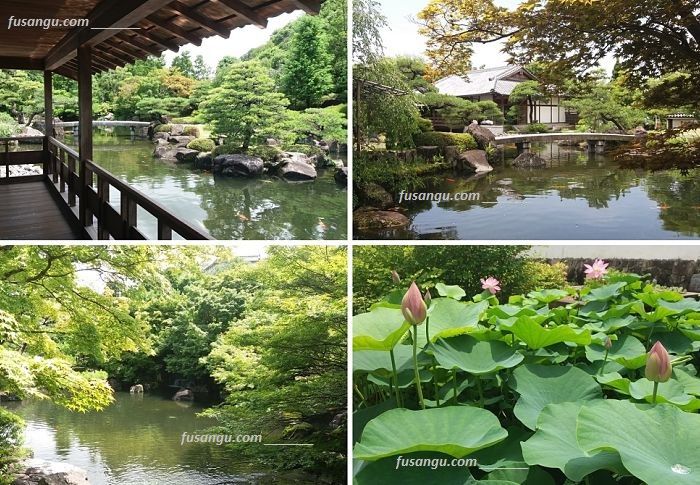
In this page we present what we consider to be the best two-week itinerary for the first journey to Japan. The article contains information and suggestions that help you outline the itinerary according to your needs.
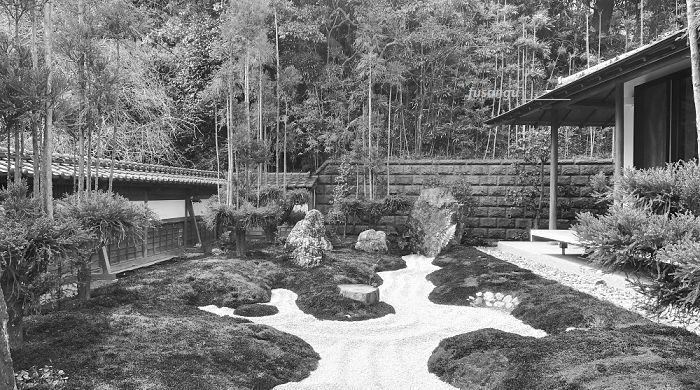
First journey to Japan: where to go and what to visit
If you are a first-time traveller to Japan, we suggest you should plan a journey along the classic tour itinerary: from Tokyo to Miyajima through Kanazawa, Kyoto, Nara, Osaka and Miyajima.
Such an itinerary strikes a good balance between different travel themes: historical heritage, traditional culture, modern culture, natural beauties, large city environment, small town context.
The proposed itinerary allows for many interesting side trips, the only limit being the available time.
Kyoto and Tokyo are Japan's foremost must-see destinations. The two cities offer a vivid and kaleidoscopic picture of the country's traditional and modern culture. They deserve many days (actually weeks if not months) to be explored. We believe that devoting one entire week to both cities is a reasonable choice if you can stay in Japan for two weeks.
Tokyo a is a vibrant metropolis where modern and ancient lifestyle coexist. It is a place you cannot miss, especially if you want to imagine Japan's future.
Kyoto provides visitors with amazing opportunities to explore, understand and often just imagine Japan's traditional culture. Kyoto hosts an incredible number of temples and shrines, many of which have outstanding artistic and cultural significance.
Not to be missed is also Kanazawa, a magnificent city located between Tokyo and Kyoto. Famous for hosting the marvellous Kenroku-En garden, Kanazawa still preserves precious treasures of Japan's traditional culture, from relatively large old quarters to samurai houses, museums and ancient temples.
Not far from Kyoto is Nara, ancient capital of Japan where you can explore the cultural bond between Japan and China. In Nara you can find an amazing park where deer freely roam around. A sense of harmony will accompany your path as you explore the city's old temples, shrines and magnificent small gardens.
It is not necessary to explain why you should visit Hiroshima. Near the city you can find the beautiful island of Itsukushima, best known as Miyajima, a gem where human creations find perfect harmony in the wild natural landscape.

Suggested 2-week itinerary
The following tour is conceived for those who visit Japan for the first time. The itinerary has a relatively slow pace, aiming to cater for travellers who enjoy to allow themselves enough time to understand and appreciate what they see.
Starting point
The journey begins and ends in Tokyo, Japan's capital and main air gateway. Those who find a convenient multi-leg flight itinerary may opt for a different solution, typically with inbound and outbound flights through Tokyo and Osaka.
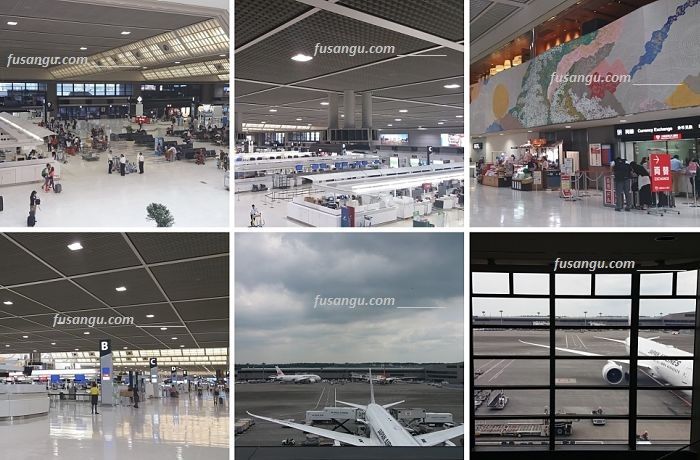
Duration
We assume that 14 full days are available for the journey. Depending on the inbound and outbound flights, the total duration of the journey may be longer (15-16 days).
How to allocate the available time
We recommend the following schedule: 4 days in Kyoto, 3 days and a half in Tokyo, 1 day and a half in Kanazawa, 1 day and a half in Hiroshima (and Miyajima), 1 day in Nara, 1 day in Osaka.
Approximately three half days are absorbed by long distance transfers (duration: 5-7 hours; i.e. Tokyo – Kanazawa – Kyoto, Kyoto – Hiroshima, Hiroshima – Tokyo). Other transfers require less than 3 hours.
Flights are not necessary; travelling by high-speed train is the best option for this tour.
Where to stay (Tokyo, Kanazawa, Kyoto, Hiroshima)
The best solution is to find accommodation only in Tokyo, Kanazawa, Kyoto, Hiroshima. The other travel destinations can comfortably be visited during one-day side trips from the cities mentioned above.
Spending a night in Miyajima or in Nara is a good choice.
Itinerary |
|
|
Day |
Destinations |
| 1 - 3 | 3 days in Tokyo (or 2 days in Tokyo and 1 day in Nikko or Kamakura) |
| 4 | ½ day for the transfer to Kanazawa, short visit during the afternoon |
| 5 | 1 day in Kanazawa |
| 6 - 10 | 4 days in Kyoto and 1 day in Nara |
| 11 | 1 day in Osaka or Koyasan |
| 12 | ½ day for the transfer to Hiroshima and visit during the afternoon |
| 13 | 1 day in Miyajima |
| 14 | ½ day for the transfer to Tokyo; remaining time in either city |
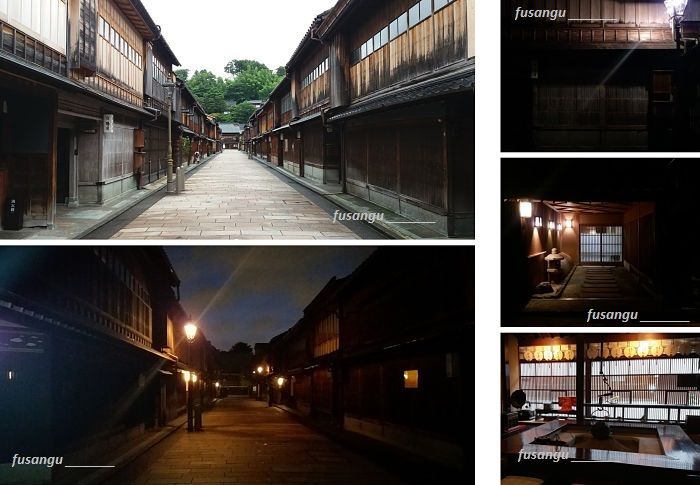
Brief description of the journey
Day 1 - 3
Tokyo
Though being a very limited period of time, three days will allow you to discover some different neighborhoods of Tokyo and visit some of the city's most significant sightseeing places and cultural sites. We suggest you devote the first day to the city centre and Ueno; during the second day you can explore Shibuya, Harajuku and Shinjuku; during the last day you can visit some museums, another district or you can take a side trip. If you do so, we suggest you consider visiting Nikko or Kamakura.
Day 4 - 5
Kanazawa
On the fourth day you can transfer by high-speed train to Kanazawa; in one day and a half you can visit much of the city's cultural heritage. Not to be missed are the castle, Kenroku-En garden, the chaya traditional districts. Comfortable strolls will allow you to discover Kanazawa's gems as well as the city's vernacular architecture.
Day 6 - 10
Kyoto and Nara
The central part of the journey focuses on Kyoto. The ancient imperial capital preserves large part of Japan's cultural heritage. Many of Kyoto's temples, shrines, museums, parks, gardens, traditional districts reach the acme of Japanese traditional art and cultural significance. A journey into ancient Japan cannot be complete without visiting the quaint and beautiful Nara, former ancient capital.
Kyoto 4-day tour
-
Day 1 - Kita (temples: Kinkaku-Ji, Ryoan-Ji, Ninna-Ji; Kitano Tenmangu shrine; Tsuikiji market, Pontocho, stroll in the city centre)
-
Day 2 – South Higashiyama area (temples: Kiyomizudera, Kodai-Ji; Yasaka shrine; Maruyama park; Gion traditional district)
-
Day 3 – North Higashiyama area (temples: Ginkaku-Ji, Philosopher's Path, Eikan-Do and Nanzen-Ji temples)
-
Day 4 – Arashiyama area or Uji; Fushimi Inari Taisha shrine
Nara 1-day tour
-
Day 1 - Nara's park (Kofuku-Ji, Todai-Ji temples, Isui-En garden, Kasuga Taisha shrine)
Day 11
Koyasan or Osaka
If you want to visit one of Japan's most significant Buddhist site, head to Koyasan. You may also stay overnight at one of the temples there, eating traditional vegetarian food and taking part in a variety of cultural and religious activities.
A completely different choice would be to spend one in Osaka.
Day 12 - 13
Hiroshima and Miyajima
In two days you can visit Hiroshima and Miyajima island. As time is limited we recommend you plan your visits beforehand. In Hiroshima you can visit Peace Memorial Museum, the castle and Shukkei-En garden. In Miyajima you can visit Itsukushima shrine and the small town. Spending a night in Miyajima is fascinating.
Day 14
Hiroshima or Tokyo
The transfer between Hiroshima and Tokyo takes half day. You can choose to spend the remaining time in either city.
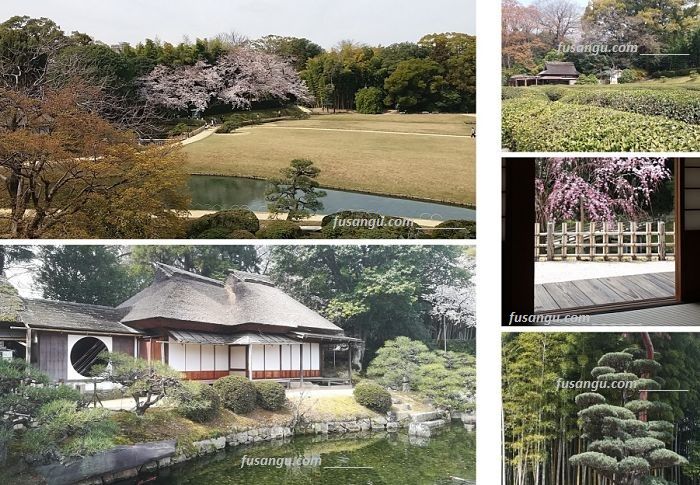
Related articles:
Itineraries in Japan: 7 days | 10 days
First journey to Japan: Ten-day classic itinerary
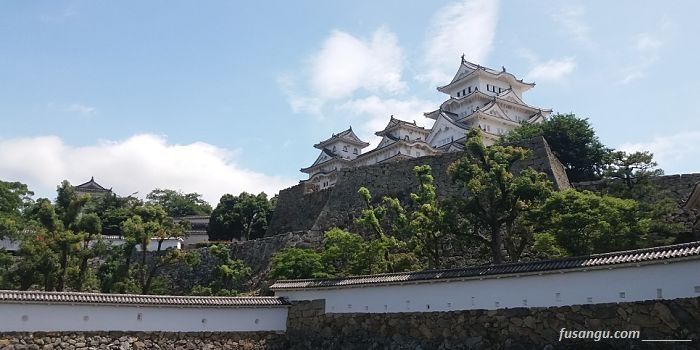
In this section we outline a selection of itineraries of different duration that allow to discover some of Japan 's must-see places.
First journey to Japan
It is very common to organise the itinerary of the first journey to Japan starting from two major destinations, i.e. Tokyo and Kyoto. Many of Japan's major tourist destinations suitable for the first journey can be reached from Tokyo and Kyoto with day-trip excursions.
One-week itinerary
Duration: 7 days
Starting point: Tokyo
Destinations: Tokyo (3), Kyoto (3), Nara (1)
Suitability: for first-time visitors who are particularly interested in Japan's vast cultural heritage
Best season: any time of year
Variants: if you can add 2 days, we recommend that you visit Kanazawa or Nikko
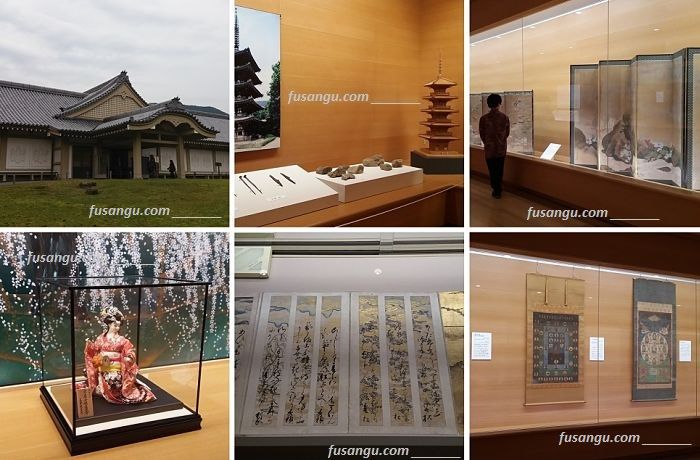
Ten-day itinerary
Duration: 10 days
Starting point: Tokyo or Osaka
Destinations: Tokyo (3), Kanazawa (2), Nara (1), Kyoto (4)
Suitability: for first-time visitors who are particularly interested in Japan's vast cultural heritage.
Variants: if you can add 2 days, we recommend that you visit Nikko and Koyasan or Osaka
More details: Japan 10-day itinerary
Two-week itinerary
Duration: 14 days
Starting point: Tokyo or Osaka
Destinations: Tokyo (3), Nikko (1), Kanazawa (1), Kyoto (4), Nara (1), Koyasan (1), Osaka (1), Hiroshima and Miyajima (2)
Suitability: for those who want to follow a classic tour through Japan's most significant cultural centres; a journey through ancient and modern Japan
Variants:if you can add 2-3 days, we recommend that you visit Ise, Takayama and Shirakawa-go
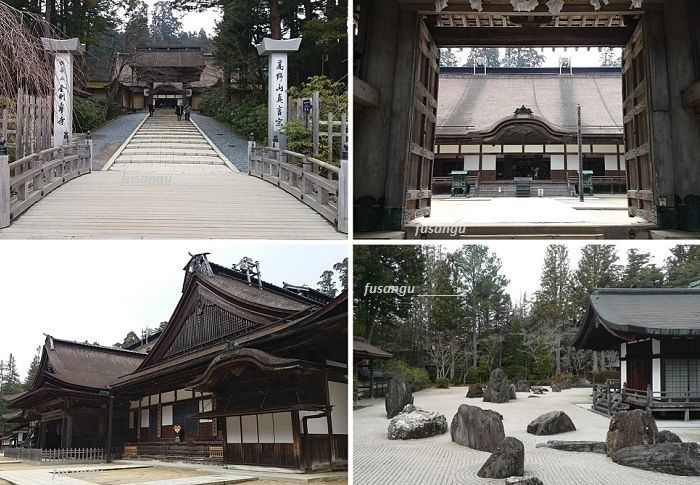
Three-week itinerary
Duration: 21 days
Starting point: Tokyo
Destinations: Tokyo (3), Nikko and Aizu-Wakamatsu (2), Nagoya (1), Ise (1), Takayama and Shirakawa-go (2), Kanazawa (2), Kyoto (5), Nara (1), Koyasan (1), Osaka (1), Hiroshima and Miyajima (2)
Suitability: for those who want to follow the classic itinerary and add off-the-beaten track destinations
Variants:if you can add 2-3 days, we recommend that you visit Okayama and Kurashiki or Amanohashidate and Kinosaki-Onsen
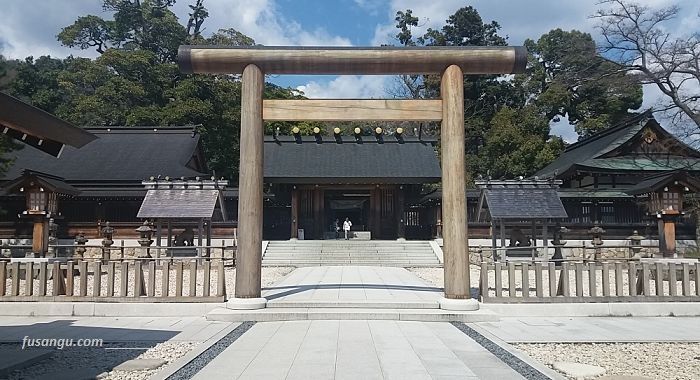
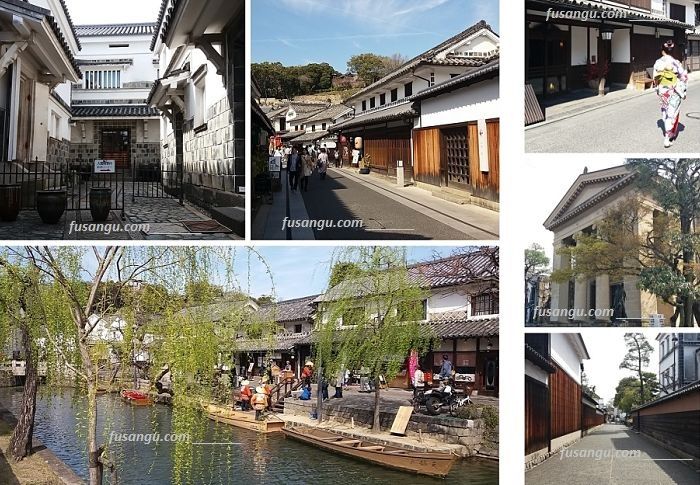
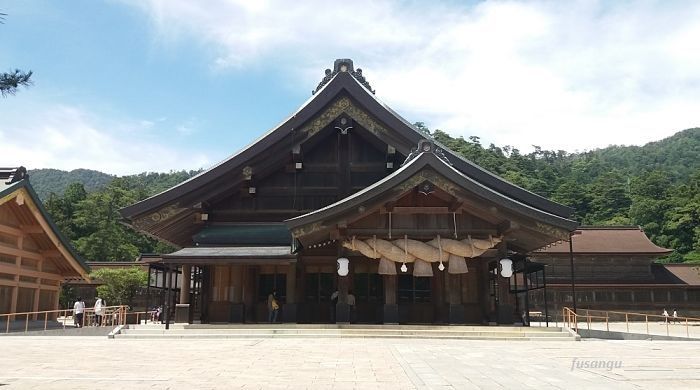
Related articles:
Itineraries in Japan: 5 days | 7 days | 10 days | 14 days
Page 8 of 8
